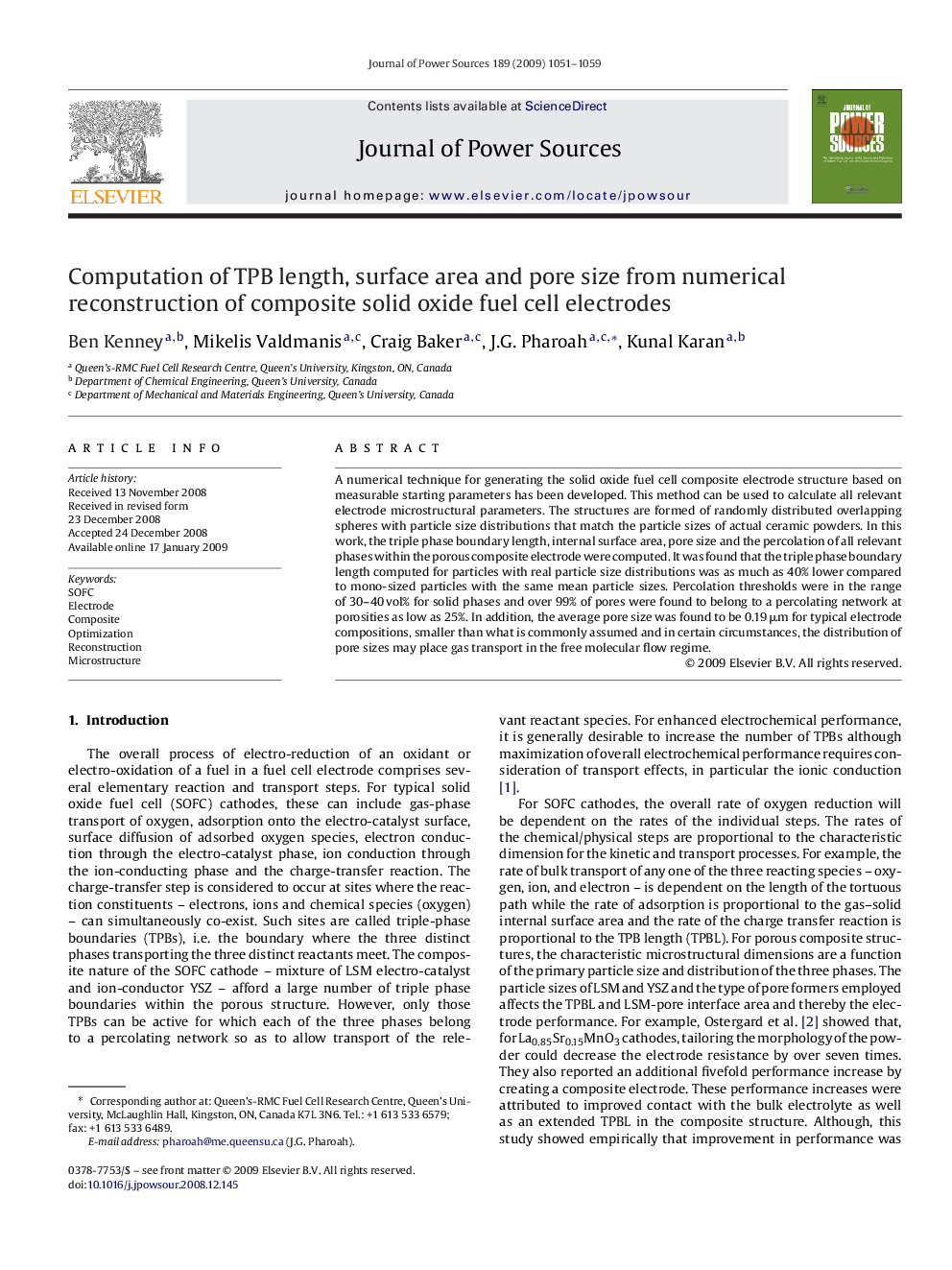| Article ID | Journal | Published Year | Pages | File Type |
|---|---|---|---|---|
| 1289982 | Journal of Power Sources | 2009 | 9 Pages |
A numerical technique for generating the solid oxide fuel cell composite electrode structure based on measurable starting parameters has been developed. This method can be used to calculate all relevant electrode microstructural parameters. The structures are formed of randomly distributed overlapping spheres with particle size distributions that match the particle sizes of actual ceramic powders. In this work, the triple phase boundary length, internal surface area, pore size and the percolation of all relevant phases within the porous composite electrode were computed. It was found that the triple phase boundary length computed for particles with real particle size distributions was as much as 40% lower compared to mono-sized particles with the same mean particle sizes. Percolation thresholds were in the range of 30–40 vol% for solid phases and over 99% of pores were found to belong to a percolating network at porosities as low as 25%. In addition, the average pore size was found to be 0.19 μm for typical electrode compositions, smaller than what is commonly assumed and in certain circumstances, the distribution of pore sizes may place gas transport in the free molecular flow regime.
